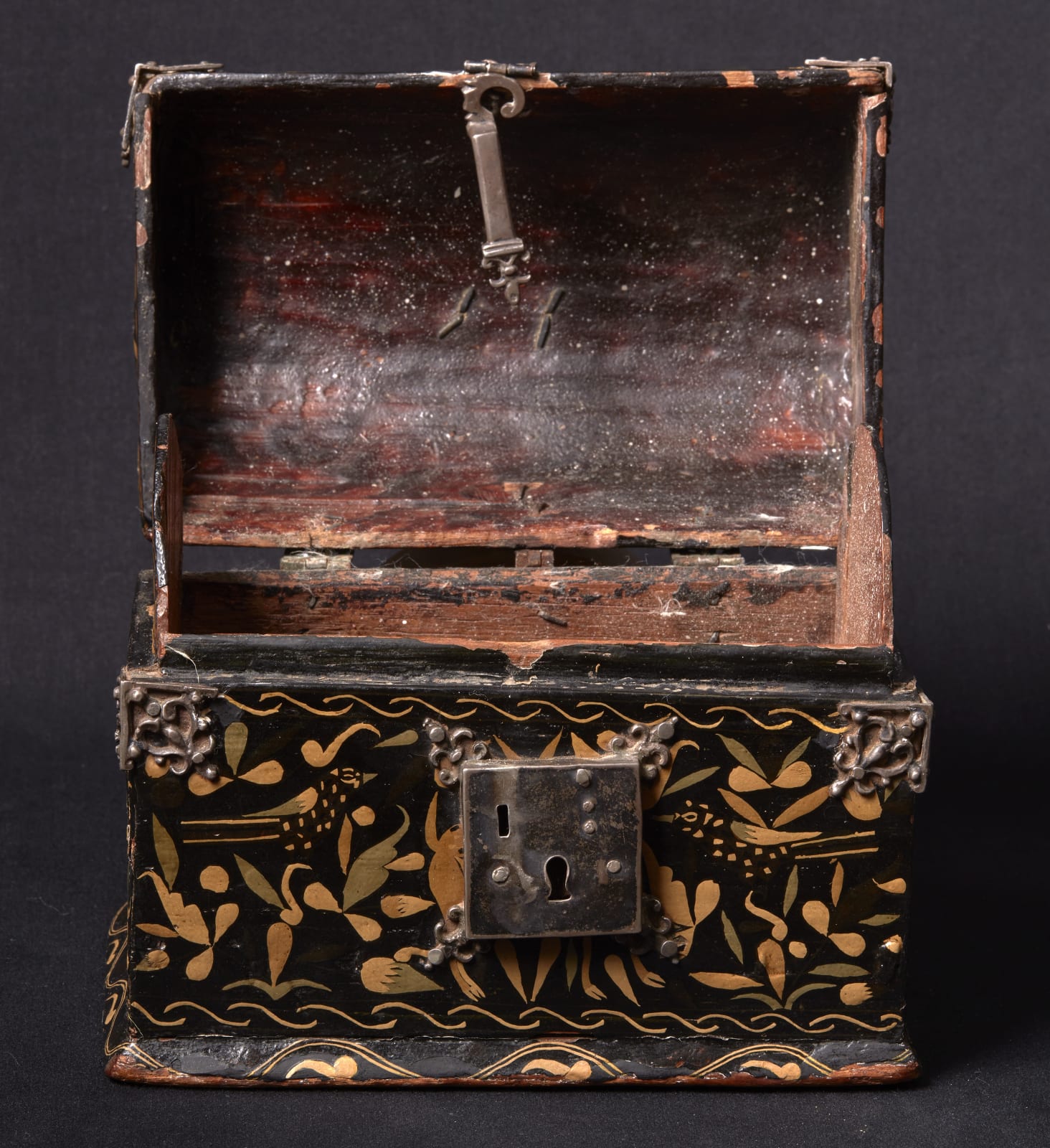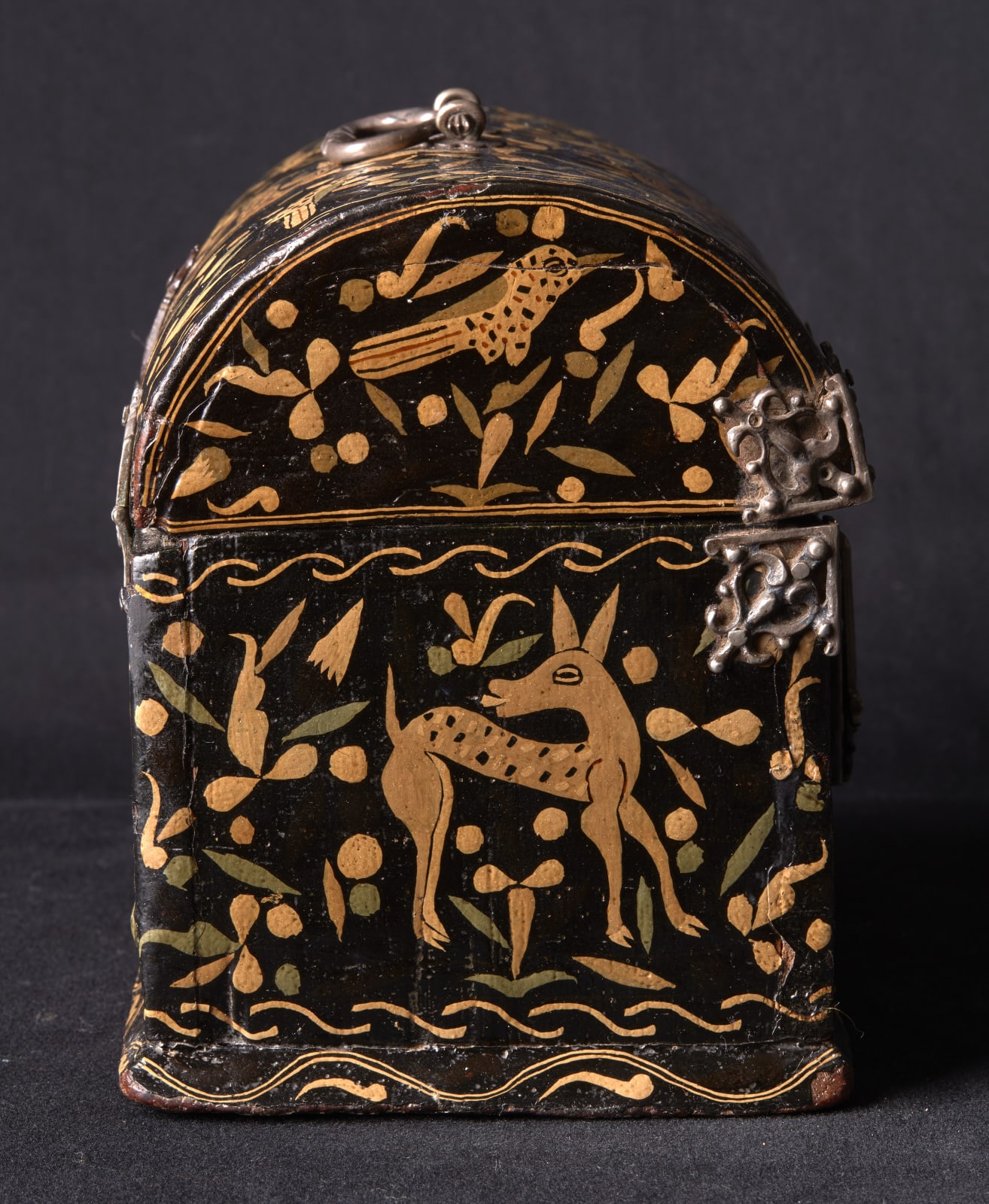BARNIZ DE PASTO, CHEST
Further images
Provenance
Private Collection.
Rectangular chest with semi-cylindrical lid. The structure of the chest is made of wood, with a design based on European models. The entire outer surface is profusely decorated. The whole chest is covered in layers of black mopa mopa resin, on which a range of motifs have been applied, such as llamas, birds and stylized elements imitating flora and tropical vegetation, where the shape of the leaves denotes varying species of forest flora. The artist has imitated the plumage of a number of birds using color and sgraffito work to depict the differing species, yellow plumage with black spots on the lid and black plumage with yellow specks on the sides. These effects are obtained by cutting fine threads, geometric shapes and dots with varying tones in the layers of resin and applying them to the piece while hot. As such, the llama’s hide features attractive details, while it turns its head to one side and with its mouth open displays its tongue. The way in which the camelid animal is distorted is reminiscent of depictions of animals in medieval Europe.
The sides present the same bird and camelid motifs surrounded by delicately stylized details featuring vegetation and floral buds. All the sides of the chest are framed by decorative borders with scrollwork and wave motifs creating the appearance of threaded rope fabric.
The upper corners of the main body of the chest, as well as those of the lid, present silver openwork corner mounts with symmetrical rocaille and pearly beading. The keyhole fitting is rectangular, with openwork applied to the corners in the same style and design as the abovementioned corner mounts. The latch that allows the chest to be locked presents the same design. Its front is plain with a hole through which the key may be introduced into the lock.
On the back there are three hinges connecting the lid to the body of the chest. The side hinges are small and are decorated in the same design as the corner mounts and the latch. The central hinge is made out of an elongated plain sheet of iron with the edges slightly bevelled and floral decorations at the ends. In the middle of the lid we find a silver handle in the shape of a baluster with floral decorations at the ends.
This small yet magnificent piece features fantastic motifs taken from the collective imagination of the Andes, recreated in combination with the influence of Oriental lacquerware in its decorative elements, producing the superb symbiosis of differing cultures.











